Introduction
Spring is a time of rejuvenation and renewal. It's the season where nature bursts forth in a riot of colors and life, making it the perfect time to consider transforming even the smallest spaces into flourishing gardens. Whether you have a petite patio, a modest balcony, or even just a windowsill, the magic of a spring garden is within reach. Not only do gardens enhance the aesthetic appeal of your living space, but they also contribute positively to mental health and the environment. This article by Plantology will serve as your comprehensive guide to designing a spring garden in small spaces, helping you to make informed choices and maximize your garden's potential.

The Benefits of a Small Space Garden
A small space garden might seem limited, but its benefits are vast. Beyond the visual appeal, these gardens offer a sanctuary that can drastically improve your mental well-being. The act of gardening has been shown to reduce stress, improve mood, and increase feelings of relaxation. Moreover, a thoughtfully designed garden can improve air quality, attract beneficial pollinators, and create a more sustainable lifestyle. Despite their size, these green oasis can pack a significant positive punch.
Purpose of the Article
This article is here to inspire and guide you through the rewarding journey of crafting a spring garden in a small space. With a step-by-step approach, we'll explore planning, plant selection, layout design, and maintenance tips, so you're equipped with all the knowledge needed for a successful garden project. Let's get started on creating your personalized piece of serenity!
Planning Your Spring Garden
Understanding Your Space
Before purchasing plants or arranging garden accessories, it's critical to assess your available space. Understanding your space helps in creating a realistic plan and avoids potential disappointments. Here are some considerations to get started:
Measuring Your Space
Start by measuring the dimensions of your space. Knowing the width, length, and height (especially on balconies or patios) will help in selecting plants and elements that fit perfectly into your tiny haven. Efficient use of vertical space is a game-changer in small areas.

Identifying Sunlight Patterns
Observe how sunlight moves across your space throughout the day. This observation will inform your plant choices since different species have varying light requirements. Consider how much direct sunlight, shade, or partial shade your garden will receive, and at what times.
Considering Environmental Factors
Take note of other environmental factors such as wind exposure and temperature fluctuations specific to your location. These can affect plant growth and should influence your selection of hardy plants suitable for your microclimate.
Setting Goals and Budget
Defining Your Garden's Purpose
Consider what you hope to achieve with your garden. Are you looking to create a visual masterpiece, a fragrant sanctuary, or a thriving edible garden? Defining a clear purpose helps in narrowing down the plant types and garden accessories you will need.
Budgeting for Your Spring Project
Create a reasonable budget that encompasses plants, soil, containers, tools, and decorative items. Having a budget helps in prioritizing essentials and may lead you to explore DIY options or upcycling to save costs.
Selecting Plants for Small Spaces
Choosing the Right Plants
Choosing the right plants forms the backbone of your small space garden. At Plantology, we offer a variety of plants that are perfect for small spaces, ensuring you don't have to compromise on beauty or functionality.

Opting for Multifunctional Plants
Consider plants that serve multiple purposes, such as providing visual appeal while also attracting pollinators or offering culinary benefits. For example, herbs like basil and mint are not only attractive but can be used as fresh flavor boosters in your meals.
Compact and Dwarf Varieties
Compact plant varieties are ideal for small spaces. These plants take up minimal room while still offering lush foliage and blooms. At Plantology, our Agapanthus Lily of the Nile is a great blue bloomer that adds vibrancy to compact gardens.
Plants for Different Light Conditions
Sun-Loving Plants
If your space benefits from abundant sunlight, consider vibrant options like the Blue Agave, which thrives in bright conditions and adds a touch of the exotic with its striking architectural form.
Shade Tolerant Selections
For spaces that are predominantly shaded, plants like the Silver Bay Aglaonema are perfect. They thrive in low-light settings and are renowned for their beautiful variegated foliage.
Plants for Transitional Light
Often spaces have areas with mixed or dappled light. Plants that can adapt to varying light conditions, such as the Adonidia Palm, bring tropical elegance and are less demanding in their light requirements.

Designing Your Garden Layout
Maximizing Space with Vertical Gardening
When floor space is limited, look upwards. Vertical gardening is a fantastic way to increase planting space and add layers that catch the eye. Utilize hanging baskets, wall planters, or a simple ladder shelf to create levels of interest.
Creating Vertical Structures
Consider using trellises or lattice panels that not only provide vertical planting space but also add an element of privacy. Climbing plants like sweet peas or nasturtiums can grow upward, creating a lush curtain of foliage and color.
Hanging Baskets and Planters
Hanging baskets leverage high spaces and create dynamic visual interest at eye level. Plant choices such as cascading foliage or vibrant flowering species can spill over the sides, adding charm to your setup.
Smart Container Selection
Choosing the Right Size and Material
Select containers that complement your plants' growth potential and aesthetic vision. Lightweight materials like fiberglass and plastic are easy to move, which is beneficial in small spaces. Ensure adequate drainage to prevent overwatering concerns.

Color and Texture Considerations
Choose containers in colors and textures that complement your plants. Neutral tones often enhance the natural beauty of plants, while bold colors can create striking focal points. Matching textures or styles with your overall decor also helps in creating a cohesive design.
Incorporating Functional Decor
Furnishing Your Outdoor Nook
Incorporate small-scale furnishings such as foldable chairs or a bistro table to make your garden a functional extension of your living space. Consider multi-functional furniture like benches doubling as storage.
Lighting and Ambiance
Enhance the ambiance with lighting options like solar-powered LED lights or lanterns. These not only add practical lighting for evening enjoyment but also infuse your space with charm and warmth.
Maintaining Your Spring Garden
Irrigation and Water Management
Small gardens often have limited access to water sources besides manual watering, making effective water management crucial for plant health.
Installing Drip Irrigation
Consider setting up a small-scale drip irrigation system to deliver water efficiently and reduce wastage. This system is especially beneficial for container-based gardens where continuous moisture is necessary.

Smart Watering Techniques
Water early in the morning or late in the afternoon to minimize evaporation. Consistent watering schedules aligned with your plant types is the key to robust growth.
Fertilization and Soil Care
Soil Quality Improvement
In small garden spaces, each plant's nutritional needs are concentrated, making soil quality essential. Use organic compost to enrich soil and improve its structure for optimal root growth.
Plant Nutrition and Feeding
Regular feeding with a balanced fertilizer, appropriate to your plants’ requirements, fosters healthy growth and vibrant blooms. Always follow product instructions to avoid over-fertilization. For more personalized advice and product solutions, visit Plantology.
Pest Management
Organic Pest Control Methods
Encourage natural predators like ladybugs and maintain plant health to reduce susceptibility to pests. Homemade sprays using neem oil or soap solutions can be effective and eco-friendly.
Seasonal Plant Care
Spring Growth Spurts
Be mindful that as spring progresses, your plants will grow rapidly. Regular pruning and deadheading ensure vigorous growth and prevent your small space from becoming overcrowded.

Adjusting for Seasonal Changes
Monitor your garden as seasons change to adjust care routines. Amending soil with nutrients or shifting plant positions based on light changes ensures sustained health and beauty year-round.
Conclusion
Creating a flourishing spring garden in a small space is a fulfilling endeavor that can transform not only your living environment but also your quality of life. By understanding your space, choosing the right plants, and implementing smart design principles, your small area can become a beautiful, functional green sanctuary. At Plantology, we're passionate about helping you find the perfect plants and tools to make your garden ambitions a reality. Explore our diverse range of products, from the elegant Adonidia Palm Doubles to the stunning Adonidia Palm Triples, and embark on your gardening journey today!
Expanding Your Knowledge: Gardening Resources and Communities
Online Gardening Forums and Social Media
In today’s digital age, online resources are invaluable for enhancing your gardening skills. Platforms like Reddit's r/gardening, Facebook groups, and Instagram accounts dedicated to small space gardening provide a space for enthusiasts to share knowledge, troubleshoot issues, and inspire creativity. Engaging in these digital communities allows you to connect with seasoned gardeners and beginners alike, offering a wealth of real-time advice and camaraderie.

Educational Websites and Online Courses
For a more structured learning approach, consider enrolling in online courses such as those offered by Coursera or EdX, where you can take classes on horticulture, sustainable gardening, and plant science. Websites like the Royal Horticultural Society and the National Gardening Association provide comprehensive guides and resources that cover various gardening topics in-depth.
Gardening Books and Magazines
Books remain a timeless resource. Titles such as “The Urban Gardener” by Matt James and “Small-Space Container Gardens” by Fern Richardson offer extensive advice tailored to small space gardening tips and tricks. Monthly periodicals like "Better Homes & Gardens" and "Gardeners' World" keep you updated on seasonal tasks and trends, providing fresh inspiration throughout the year.
Innovative Techniques and Trends in Small Space Gardening
Aquaponics for the Modern Gardener
Aquaponics combines aquaculture and hydroponics in a symbiotic environment, allowing for the cultivation of both plants and fish. This innovative system is particularly suitable for urban dwellers seeking sustainable food production methods in limited spaces. Beginners can start with desktop aquaponics systems or culinary aquaponics kits that facilitate herb and leafy green growth.
Sustainable Gardening Practices
With growing awareness about environmental preservation, sustainable gardening practices have gained traction. Strategies such as xeriscaping, which uses drought-tolerant plants to reduce water usage, and permaculture principles help to form resilient gardens. These methods not only support biodiversity but are also well-suited for small urban gardens striving to make a positive environmental impact.

Integration of Smart Technology
Smart technology is revolutionizing small space gardening by automating tasks and providing detailed insights into environmental conditions. Devices such as smart watering systems, sensor-based horticultural tools, and plant care apps can track moisture levels, sunlight exposure, and temperature. This integration allows for precision gardening, ensuring optimal plant health while reducing waste.
Case Studies: Inspirational Small Space Gardens
An Urban Balcony Oasis in Brooklyn
Consider the transformative journey of an average-sized Brooklyn balcony turned into a verdant retreat. The owner maximized vertical space with tiered planters and trellises for climbing plants like morning glory and sweet peas. Incorporating a color theme of whites and blues with a mix of compact roses and lilies further enhanced the visual appeal. This commitment to optimizing every square inch turned the space into a private Eden with a delightful aroma and visually soothing ambiance.
A Seasonal Rooftop Edible Garden in Chicago
This Chicago rooftop garden demonstrates the feasibility of sustainable practice in small spaces. By utilizing raised beds and container gardening, the owner successfully grows a rotation of seasonal vegetables and herbs. Successional planning—a crucial aspect in limited space—ensures continuous harvest throughout the growing season. An irrigation system coupled with rainwater harvesting takes full advantage of natural resources, emphasizing sustainable food production.

A Minimalist Courtyard in Tokyo
In a tightly packed city like Tokyo, space is a precious commodity. One homeowner successfully transformed a compact courtyard into a minimalist garden showcasing native Japanese plants. The design focused on a few specimen plants, such as a dwarf maple tree and moss ground cover, alongside rock features to evoke tranquility and simplicity, adhering to the garden principles of balance and harmony intrinsic to Japanese culture.
Future of Small Space Gardening
Biophilic Design: Nature Meets Urban Living
Biophilic design, the practice of integrating natural elements into urban architecture, is becoming increasingly influential in gardening trends. As cities grow increasingly dense, incorporating natural greenery into living spaces through techniques like green walls and rooftop gardens can significantly impact human well-being. Future urban landscapes may be designed with integrated small gardens to foster sustainable living environments that naturally promote mental health and productivity.
Hydrogel Soil Innovations
Advancements in soil technology such as hydrogel-infused soils offer exciting potential for small space gardening. These water-retentive polymers enhance soil moisture retention, reducing water usage and improving plant survival in constrained urban settings. With these innovations, gardeners can maintain vibrant gardens with less effort and resource input, contributing to sustainable future practices.

Robotic Gardening Solutions
The future of gardening may also see the increasing role of robotics, from automated planters that track plant growth and optimize care routines to advanced drones that assist with pest management and aerial health assessments. These innovations can make gardening more accessible and efficient, particularly for individuals with limited mobility or time constraints.
Joining the Movement: How to Become an Urban Gardener
Connect with Local Gardening Communities
The power of a gardening community should not be underestimated. Local clubs, meetups, and events such as farmers markets offer inclusive spaces for sharing experiences and exchanging plants or seeds. By joining such communities, aspiring gardeners can obtain hands-on experience, mentorship, and build connections with fellow enthusiasts.
Volunteering and Community Gardens
Engaging with community gardens is another way to practice your skills while contributing to a communal urban green space. These gardens often welcome volunteers and provide educational workshops, supplying both practical gardening opportunities and insights into sustainable practices. Explore directories like the American Community Gardening Association to find ventures near you.
Host Workshops and Garden Swaps
If you've gained some gardening proficiency, hosting a workshop or garden swap in your neighborhood could spread enthusiasm and knowledge, fostering a culture of sharing and learning. Such events can build a local network of enthusiastic gardeners while promoting sustainable gardening practices and increasing biodiversity in urban areas.

Conclusion: Embrace the Joy of Small Space Gardening
Gardening in small spaces is an art form reflecting both creativity and practicality. It challenges individuals to reconsider how we use space and resources and to find connections with nature despite urban constraints. Whether you’re first dabbling or continuing a green thumb journey, small space gardening offers endless possibilities for personal growth and environmental stewardship. With Plantology’s commitment to supporting your gardening endeavors, from resourceful plant selections to innovative gardening products, the rewards of a vibrant garden are within reach. Uncover the serene joy of transforming small spaces with nature's bounty, and embark on a path towards creating your flourishing spring oasis.

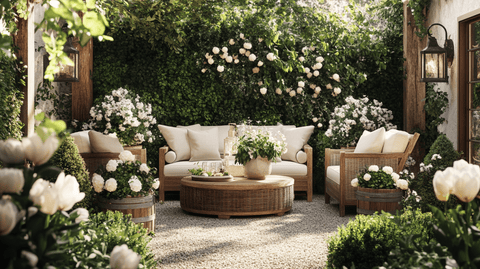









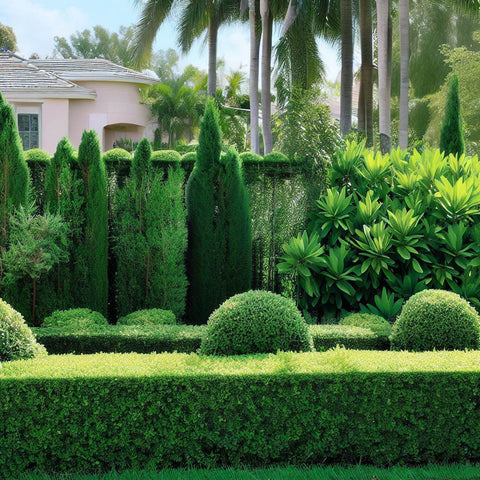
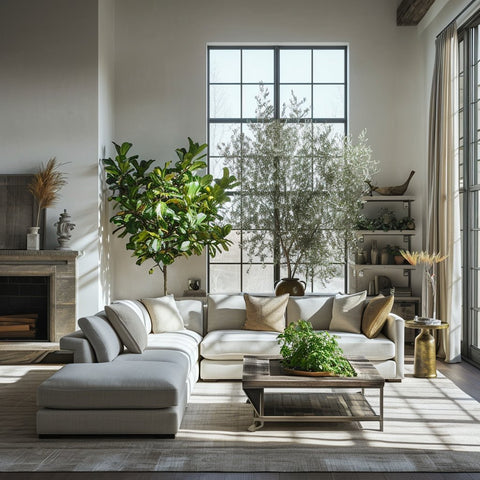
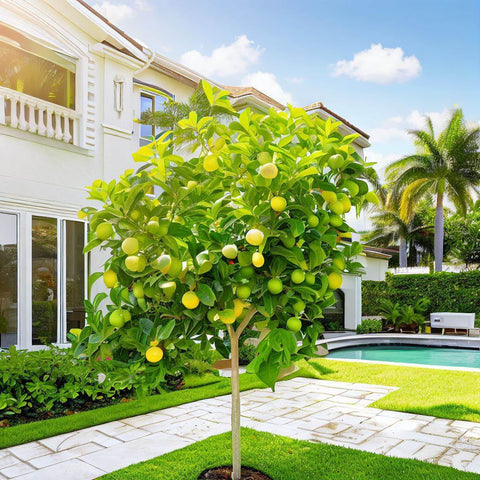
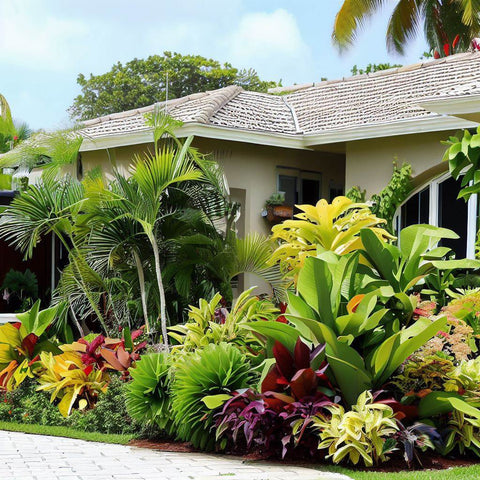

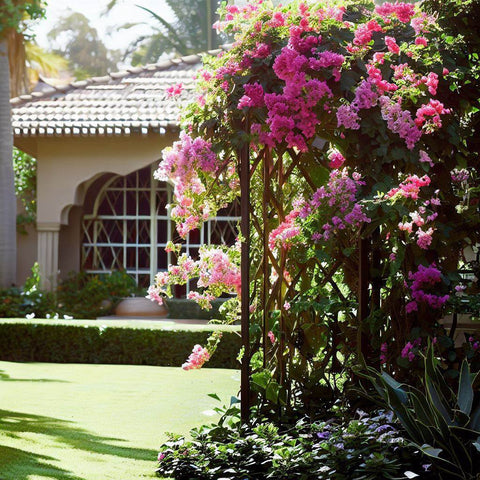
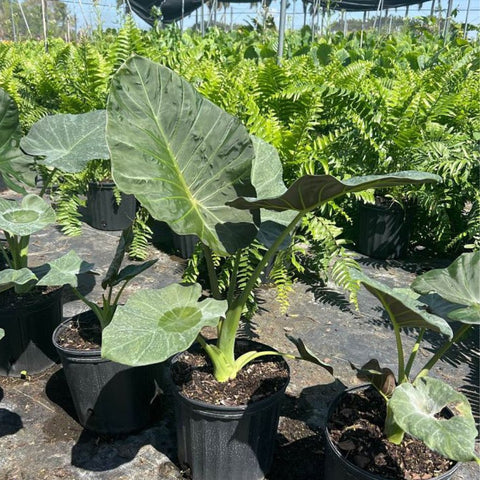
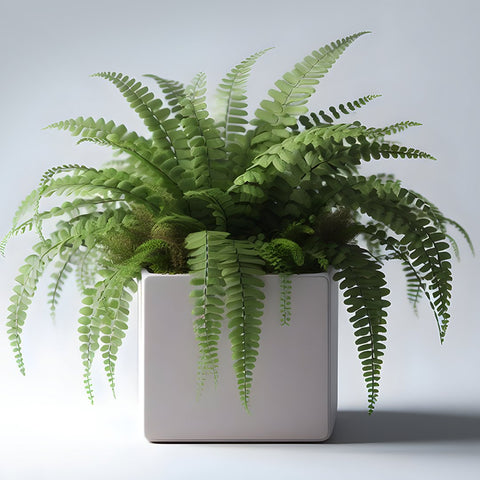
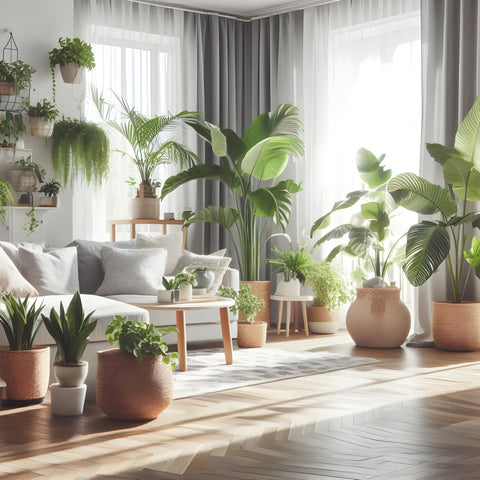
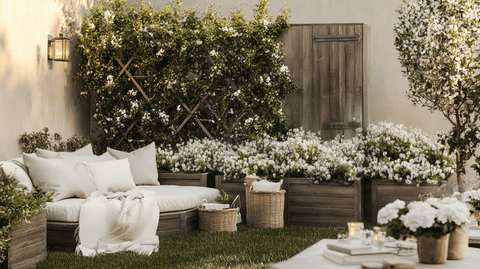









Comments (0)
There are no comments for this article. Be the first one to leave a message!